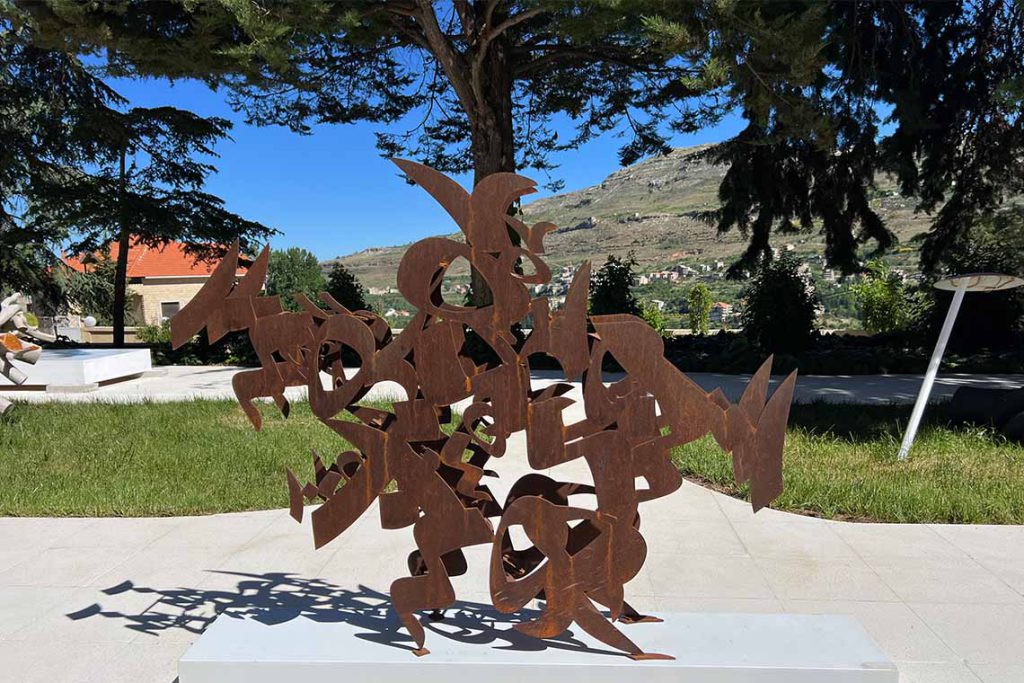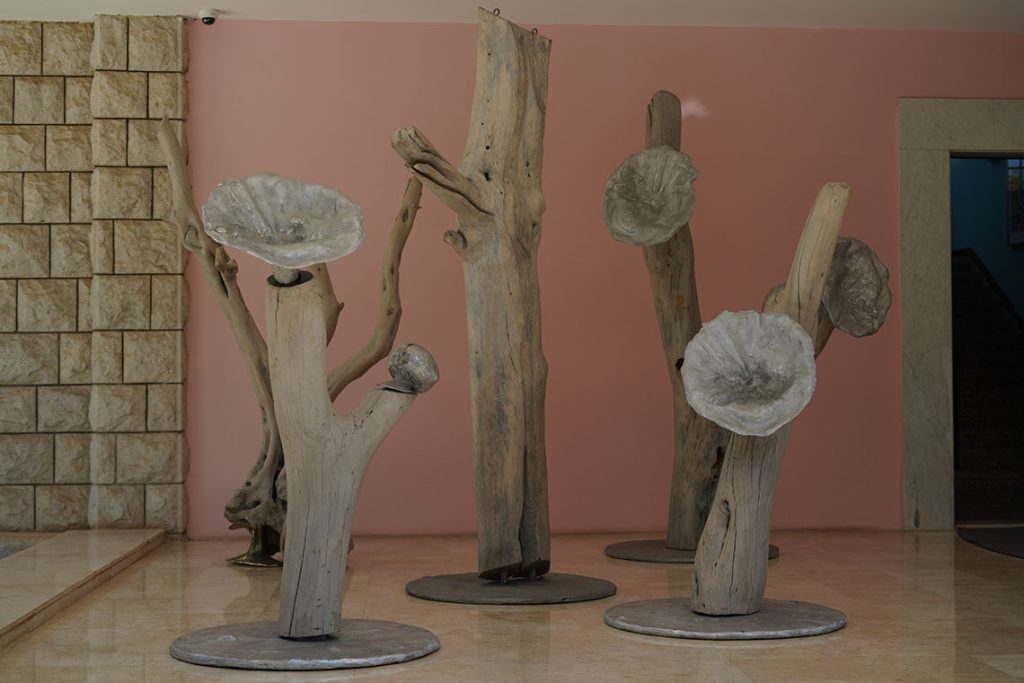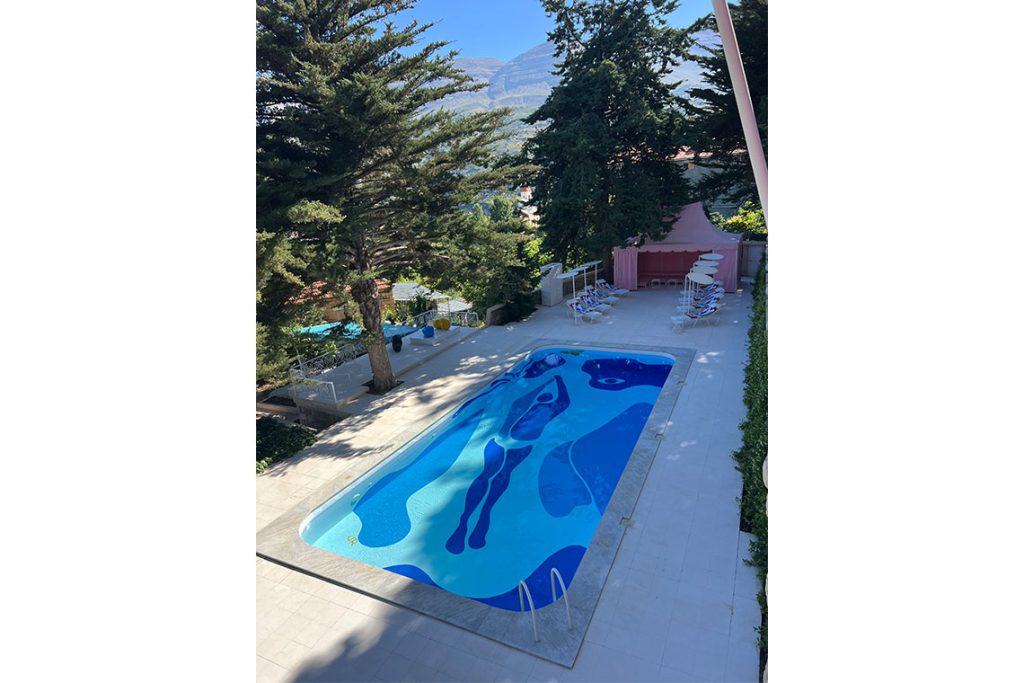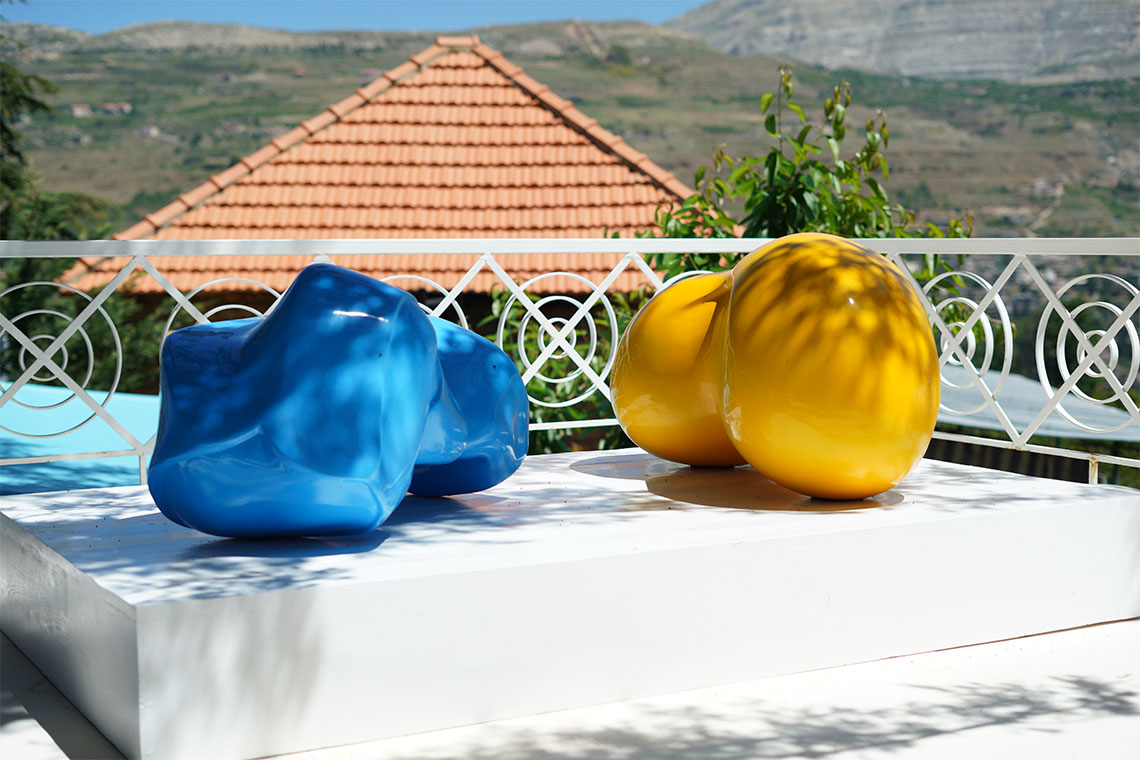The annual Mashawir exhibition brings contemporary art to Lebanon’s iconic Kadisha Valley, breathing new energy into the works and sparking new narratives.
Returning for its third edition, this year’s KDSHA exhibition – titled Mashawir (‘Journeys’ in Arabic) – offers visitors the chance to experience an exciting cross-cultural exchange between both Lebanese and international artists as they come together in the beautiful surroundings of Villa Chamoun and the sublime Kadisha Valley.
A UNESCO World Heritage site, the Kadisha Valley holds great significance in Lebanese history and culture. The area is home to some of the most important early Christian monastic settlements in the world, as well as the Cedars of God, one of the few remnants of Lebanon’s once extensive cedar tree forests. The valley is also the birthplace of one of the country’s greatest literary figures: the writer, poet, artist and philosopher, Gibran Khalil Gibran.

“The exhibition was really inspired by Gibran Khalil Gibran and Kadisha,” curator Rania Tabbara tells Canvas. “His journey, and his inspirational work and poems, have been nourished by this valley. This is why I wanted to create an interaction between contemporary art today and what it can still evoke with this valley, because we are still on the same path. There’s an urgency to speak about this valley and its beauty in the same way that he did.” With this in mind, Tabbara handpicked artists with their own personal journey, narratives and experiences. “Each one has a specific message,” she continues. “I love their work independently, [but] they have never been put together in one exhibition before.”
Hosted at Villa Chamoun, a former family home restored as a charming 1960s-style guesthouse, each of the participating artists brings a unique perspective to the exhibition through their own unique works. Displayed alfresco in the villa’s inviting garden space, surrounded by the natural beauty of the mountains and the valley below, each takes on new context, engaging in dialogue with the incredible landscape.
Ceramicist and sculptor Samar Mogharbel explores the relationship between notions of resistance and surrender through her untitled works, produced from fibreglass resin. She imbues the material with a humanistic touch that evokes her previous familiarity in clay, symbolising her connection with the earth. “I love this place,” Mogharbel says. “This is the first time I’ve worked on this scale – much bigger than you could fire in a kiln – and it has let me experiment with new colours. My works are outside, under the trees. We’re lucky to have the opportunity to show our artworks here, and I hope this will continue in the future.”

Multidisciplinary artist Hady Sy’s steel sculptures – part of his It’s A Numbers Game series – reflects his own frustrations at the phenomenon of depersonalisation in a world where people are increasingly reduced to simple statistics. By restoring figural forms to such mere numbers, he seeks to reconnect with the humanity that they otherwise obscure.
“I’ve never exhibited in such places,” Sy admitted. “I think I’ve always had this looming thought that I didn’t want to, or that it’s not the right place, but it’s a beautiful village. With everything that Lebanon is living and suffering through, any initiative that can bring people together and make them happy – and make them think – in such a beautiful way has my total support. I think art is the closest route from man to man.”
Rounding out the trio, painter and sculptor Ghassan Zard offers works from not one but two of his collections. His Wandering Turtles evoke a return to the peace of nature and a slower pace of life, while the tree-like works of his Whispers of Nature series suggests a dream-like forest where the trees speak in hushed tones, imparting secrets to those willing to listen. “For a few years now, I have been working on the relationship between man and nature,” says Zard. “I find the idea of exhibiting at the Villa Chamoun to be an excellent, as it allows works by different artists to walk in the Lebanese mountains and find a place in an enchanting setting. The relationship with the viewer is very different from that of a gallery.”

In concert with Mashawir, KDSHA also serves as the launch of Villa Chamoun’s annual pool installation, which invites an artist to transform the villa’s large outdoor swimming pool into their own personal canvas. For this year, that opportunity has been given to Venezuelan artist Daniel Rey – visiting Lebanon for the first time – and his latest creation, Alchemical Splash. Based on the idea that there is another world under the water, in which things are more evocative and dream-like, the work takes the form of an immersive, large-scale drawing on the walls and floor of the pool. At the heart of the scene lies the swimmer, surrounded by various aquatic icons, ranging from trunks and goggles to a gigantic and haunting singular eye, as if to evoke some mythic sea monster.
“I was a swimmer during high school,” explains Rey. “When I was swimming, it was the only moment in which I was able to escape from all the noise, the violence and all the other things that were happening in Venezuela.” He also relished the prospect of working on such a grand scale. “In my practice, I’m always dealing with space and how we relate to space, so having this vast canvas on which create something was very exciting,” he concludes.
Both the Mashawir exhibition and Alchemical Splash run until 2 October 2024



